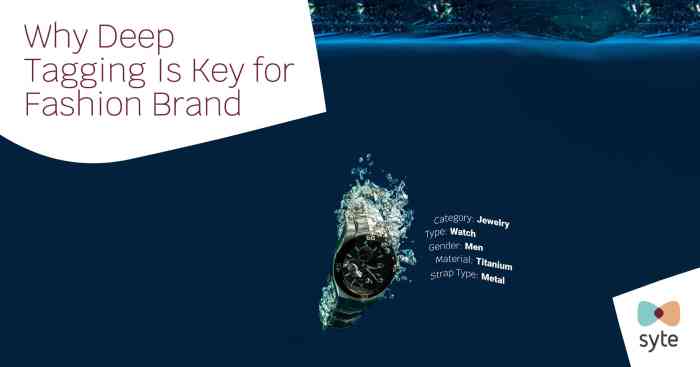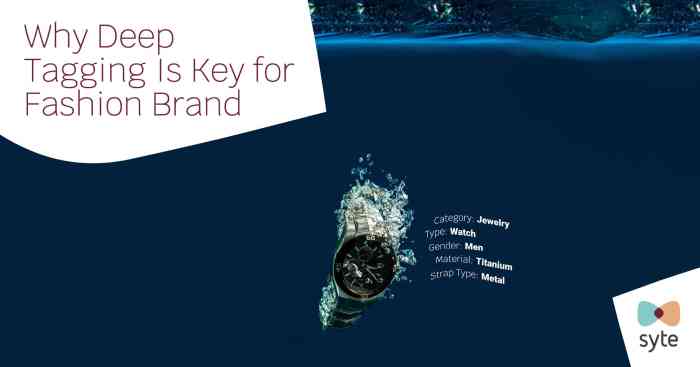Google AI photo tagging life archive offers a revolutionary way to organize and experience your visual history. Imagine effortlessly sorting through years of photos, instantly recognizing faces, places, and events. This technology promises a powerful tool for creating a comprehensive and interactive life archive, allowing you to relive cherished memories and discover hidden connections within your visual story.
This detailed exploration delves into the workings of Google’s AI photo tagging technology, examining its implications for personal life archives. We’ll investigate the user experience, data security, and potential future applications. From the technical details of image recognition to the ethical considerations of privacy, this comprehensive guide will leave you with a clear understanding of this transformative technology.
Defining Google AI Photo Tagging
Google’s AI photo tagging technology leverages advanced machine learning algorithms to automatically identify and categorize objects, people, and places within images. This capability significantly enhances the user experience by automatically organizing and retrieving photos based on their content. This automated process frees users from the manual task of tagging and searching through vast photo collections, making their digital archives more accessible and manageable.This technology goes beyond simple matching, utilizing sophisticated image recognition and object detection techniques to understand the nuances of visual content.
It’s not just about recognizing a “cat”; it’s about understanding the cat’s breed, pose, and even its emotional state (if discernible). This detailed understanding enables powerful search and organization capabilities, transforming how users interact with their photo libraries.
Image Recognition and Object Detection Methods
Google employs a combination of deep learning models and computer vision techniques to achieve accurate image recognition and object detection. Convolutional Neural Networks (CNNs) are central to this process. These networks are trained on massive datasets of images, learning to identify patterns and features that distinguish different objects and concepts. Transfer learning is another crucial technique, where pre-trained models on large datasets are adapted to specific tasks like photo tagging, significantly reducing the need for vast amounts of training data for each new application.
How AI Photo Tagging Works in a User’s Life
This technology seamlessly integrates into a user’s life by automatically tagging photos as they are uploaded or imported. The system identifies people, places, and objects, creating a structured organization of the photo library. This automated process means users can easily search for photos of their family vacation, find images of a specific landmark, or even locate photos of a particular pet.
This enhanced searchability dramatically improves the experience of navigating a user’s personal photo archive.
History of Photo Tagging Technology
Early photo tagging relied on simple matching and human annotation. The advent of digital photography marked a shift towards automated solutions. Early attempts at image recognition were limited by computational power and data availability. Key milestones include the development of more sophisticated algorithms and the availability of massive image datasets. The rise of deep learning and the development of more powerful CNNs significantly improved the accuracy and sophistication of photo tagging, enabling far more nuanced recognition and categorization.
The exponential growth of image data and computational power continues to drive improvements in photo tagging technology.
Google AI Photo Tagging vs. Other Technologies
Google’s AI photo tagging technology distinguishes itself through its comprehensive understanding of visual content. Other services might focus on basic object recognition or tagging. Google’s approach leverages a more sophisticated understanding of context, enabling more accurate and nuanced tagging. For instance, recognizing the emotional expression of a person in a photo, or differentiating between similar objects, is a key strength.
Google’s AI photo tagging is amazing for archiving life’s moments, but imagine if your photos could be even more connected to the world around them. That’s where a project like inlinkuk bt london uk free gigabit wifi linknyc comes in. This could potentially link locations in your photos to real-time information, making your photo archive incredibly rich with context.
Ultimately, a powerful AI-driven photo tagging system combined with these kinds of global connections could create a truly unique and insightful personal history.
This focus on contextual understanding and advanced image analysis makes Google’s technology more robust and user-friendly than simpler alternatives.
Comparison Table: Google AI Photo Tagging vs. Other Services
| Feature | Google AI Photo Tagging | Other Service 1 | Other Service 2 |
|---|---|---|---|
| Accuracy | High, with nuanced understanding of visual content | Moderate, relying on basic object recognition | Low, primarily matching |
| Ease of Use | Excellent, intuitive interface for tagging and searching | Good, but user interface may have limitations | Fair, user may need to manually input tags |
| Pricing | Integrated with Google Photos (free) | Subscription-based, varying tiers | Free basic, premium options available |
| Features | Comprehensive object recognition, facial recognition, location tagging | Basic object recognition, limited search capabilities | Basic tagging and search |
Life Archive Implications
AI photo tagging promises a revolutionary approach to managing personal life archives. By automating the process of organizing and categorizing photos, it can free up valuable time and mental space, allowing users to focus on the memories themselves rather than the logistical aspects of storage and retrieval. This shift towards automated organization can transform the way we interact with and appreciate our past.AI-powered tagging can transform the experience of building a personal life archive, making it more efficient and engaging.
Imagine effortlessly navigating through decades of memories, instantly finding specific moments or people. This potential is exciting, offering a deeper connection to our past and a more meaningful way to share our stories with others.
Enhanced User Experience in Creating and Managing a Life Archive
AI photo tagging significantly improves the user experience in managing a life archive. Automated tagging streamlines the process of organizing photos, eliminating the tedious task of manual categorization. This frees up time and cognitive resources, allowing users to focus on the emotional value of their memories.
AI Organization and Categorization of Vast Photo Collections
AI excels at organizing and categorizing vast amounts of photos. Using algorithms trained on massive datasets, AI can identify objects, people, and scenes within images, creating sophisticated classifications. This allows for flexible search criteria and a comprehensive approach to managing a lifetime of memories. For example, an AI system might automatically tag photos of a family vacation with the location, dates, and names of family members, enabling effortless retrieval later.
AI Identification and Connection of People, Places, and Events
AI photo tagging can go beyond simple categorization. By analyzing visual patterns and contextual data, AI can identify and connect people, places, and events within photos. This powerful capability enables the creation of dynamic narratives, linking seemingly disparate moments into a cohesive story of a life. For instance, AI could identify recurring locations in a user’s photo collection and automatically generate timelines showcasing visits to those places over time.
Google’s AI photo tagging for life archiving is pretty cool, right? Imagine all those old photos automatically organized and searchable. But while we’re enjoying the digital benefits, it’s also important to be aware of scams, like the targeted mortgage robocalls recently addressed by the FCC. This recent cease and desist order highlights the importance of staying vigilant, which can also help protect the valuable memories stored in those tagged photos.
Ultimately, both the tech advancements and the need for scam awareness play a part in how we manage our digital lives, including our photo archives.
Privacy Concerns and Ethical Considerations
The use of AI in personal life archives raises important privacy concerns. Users need to understand how their photos are being processed and stored, and what data is being extracted. Transparency and control over the data used by AI systems are paramount. Ethical considerations include potential biases in the AI algorithms, the potential for misidentification, and the long-term implications of relying on technology to manage personal memories.
Potential for Bias in AI Photo Tagging Systems
AI systems are trained on vast datasets, and if these datasets reflect existing societal biases, the AI systems themselves may inherit and perpetuate those biases. For example, if a training dataset predominantly features light-skinned individuals, the AI might have difficulty recognizing and accurately tagging people with darker skin tones. Careful consideration and mitigation strategies are needed to ensure fairness and accuracy.
Use Cases of AI Photo Tagging in a Life Archive
| Use Case | Benefits | Challenges | Solutions |
|---|---|---|---|
| Automated Photo Organization | Reduces manual effort, saves time, improves accessibility | Potential for misidentification, need for continuous learning | Regular algorithm updates, user feedback mechanisms, clear labeling guidelines |
| Enhanced Search Capabilities | Allows for precise searches based on people, places, or events | Privacy concerns about data usage, potential biases in identification | Transparent data usage policies, diverse training datasets, independent audits |
| Automated Memory Creation | Connects photos to events and experiences, creates richer narratives | Potential for inaccurate interpretations, need for human review | Robust data validation, user intervention options, human-in-the-loop processes |
| Family History Preservation | Preserves memories for future generations, creates shared experiences | Potential for misattribution of photos, sensitivity around potentially sensitive content | Clear guidelines on photo inclusion, family consultation, sensitive content tagging options |
User Experience and Interaction

A seamless user experience is crucial for a successful photo tagging system integrated into a life archive. Users should be able to easily manage their vast photo collections without feeling overwhelmed or frustrated. This requires a user-friendly interface that simplifies the process of tagging, searching, and organizing photos. The system should allow for intuitive customization, allowing users to tailor the tagging experience to their specific needs and preferences.A well-designed photo tagging system should reduce the cognitive load on users.
The system should prioritize clarity and simplicity, guiding users through the process with clear visual cues and concise instructions. This intuitive design will foster a positive user experience, encouraging long-term engagement with the life archive.
User Interface Design
The user interface for a photo tagging system within a life archive should be visually appealing and highly functional. A clean, uncluttered design with clear visual hierarchies is essential for navigating the system effectively. Using consistent visual elements, such as colors, icons, and fonts, will contribute to a unified and recognizable interface. Intuitive navigation is key, enabling users to quickly locate and access specific photos or albums.
Visual aids, such as thumbnail previews and interactive filters, will further enhance the user experience.
Google’s AI photo tagging system is fascinating, promising to organize your life’s visual archive. It’s amazing how technology can help us preserve memories, but sometimes, practical considerations like the lack of a headphone jack on the new Huawei P40, as detailed in this article on huawei p40 hands shows triple camera module no headphone jack , remind us that technological advancements don’t always come without trade-offs.
Still, the potential of Google’s AI for organizing our visual history is incredibly powerful and a welcome addition to our digital lives.
Photo Import Process
The photo import process should be straightforward and efficient. Users should be able to import photos from various sources, such as mobile devices, computers, or cloud storage. The system should provide clear instructions and visual feedback at each step of the import process, ensuring users understand the progress. Import options should include batch processing for multiple files, ensuring a time-efficient workflow.
A progress bar and status messages will keep users informed throughout the import process.
Customization Options
Users should have extensive control over the tagging process. Options for customizing the tagging scheme should include pre-defined tags or the ability to create custom tags. Users should be able to associate multiple tags with a single photo, allowing for flexible and nuanced organization. Users can further refine their tagging preferences by specifying the type of photos to be tagged (e.g., people, places, events).
Customizable tagging criteria will ensure the system adapts to individual user preferences.
User Interactions with the System
| Action | Input | Output | Feedback |
|---|---|---|---|
| Search | s, dates, or location | Matching photos displayed | Number of results, filters applied, or a “no results” message |
| Filter | Tag categories, dates, or other criteria | Filtered photo display | Visual cues indicating the filter criteria, or a “no matching photos” message. |
| Tagging | Selecting a tag from a list, typing a new tag, or associating multiple tags | Photo tagged with selected tags | Confirmation message, or visual indication of successful tagging, such as a checkmark. |
| Importing | Selecting files or folders from a source (e.g., computer, cloud storage) | Photos added to the archive | Progress bar, status messages, visual indication of the import status, or error messages if any issues occur. |
Providing Feedback and Suggestions
The system should incorporate mechanisms for users to provide feedback and suggestions for improvement. A feedback form or a dedicated suggestion box should be accessible within the system. Users should be able to report bugs, suggest new features, or provide comments on existing features. Collecting this feedback allows the system developers to refine the product based on real-user experiences.
Data Security and Privacy
Protecting user data is paramount for any life archive, especially one powered by AI photo tagging. This necessitates robust security measures to safeguard sensitive information and maintain user trust. A secure system fosters a safe environment where users feel comfortable sharing their life’s memories, knowing their data is handled with the utmost care and respect.The integrity and confidentiality of a life archive are intrinsically linked to the security of the underlying data.
This includes not only the photos themselves but also the metadata generated by the AI tagging process, including dates, locations, and associated people. Comprehensive security measures are crucial to prevent unauthorized access, data breaches, and misuse of personal information.
Ensuring Data Security Within the System
Robust encryption protocols are essential for safeguarding data at rest and in transit. Employing end-to-end encryption ensures that only authorized users can access the data, even if the system itself is compromised. This encryption should be applied to both the raw image files and the metadata generated by the AI tagging process. Regular security audits and penetration testing are vital for identifying and patching vulnerabilities before malicious actors can exploit them.
Protecting User Privacy in AI Photo Tagging
Protecting user privacy in AI photo tagging requires careful consideration of the data collection and usage policies. Transparency is key; users should understand how their data is being used and stored, including the specific types of AI models employed and how they generate tags. User consent should be explicit and granular, allowing users to control which features are enabled and how their data is utilized.
Security Protocols and Encryption Methods
Advanced encryption standards, such as AES-256, should be employed to protect the sensitive data within the system. Data should be encrypted both in transit and at rest. Multi-factor authentication (MFA) adds another layer of security, requiring users to provide multiple forms of verification before accessing their accounts. This can include passwords, security tokens, or biometric authentication. The system should also incorporate secure deletion procedures to ensure that data is irreversibly removed when requested by the user.
Comparison of Security Models for Photo Tagging Applications
Different security models can be employed for photo tagging applications. For example, a federated learning approach, where the AI model is trained on distributed data, can minimize the exposure of sensitive user information. Cloud-based solutions with robust security features can offer scalability and redundancy. Comparing these models is essential for selecting the most appropriate solution for a life archive.
Factors like data sensitivity, scalability needs, and budget considerations must be taken into account.
Examples of Data Breaches and Prevention
Data breaches in photo tagging systems can be disastrous. The Cambridge Analytica scandal highlights the potential for misuse of personal data. Similarly, breaches in image-recognition systems could lead to the misidentification or misattribution of individuals. Prevention strategies include strong access controls, regular security audits, and user education on security best practices. Strong passwords, two-factor authentication, and the implementation of regular security patches are critical components.
Security Measures for Data Privacy in Photo Tagging, Google ai photo tagging life archive
| Threat | Prevention | Mitigation | Contingency |
|---|---|---|---|
| Unauthorized Access | Strong passwords, multi-factor authentication, access controls | Security audits, incident response plan, immediate password change | Data backup and recovery, legal consultation |
| Data breaches | Regular security updates, penetration testing, encryption | Data breach response plan, notification procedures, forensic analysis | Data restoration from backups, legal action |
| Malware attacks | Firewall protection, antivirus software, intrusion detection systems | Isolate infected systems, malware removal, data restoration | Business continuity plan, disaster recovery plan |
| Phishing attacks | Security awareness training, spam filters, strong email security | User authentication checks, incident reporting, system hardening | Data recovery from backups, legal action |
Future Trends and Possibilities: Google Ai Photo Tagging Life Archive
The future of AI photo tagging and life archive systems is brimming with exciting possibilities. Imagine a world where your entire life story, captured in photos and videos, is not just stored but actively interpreted and woven into a compelling narrative. This isn’t science fiction; it’s the potential reality powered by the ever-evolving capabilities of artificial intelligence.AI is rapidly advancing, promising to revolutionize how we interact with and understand our personal histories.
This evolution extends beyond simple tagging, enabling more sophisticated analyses and interactions with our life archives, leading to richer, more meaningful experiences.
Potential Advancements in Accuracy and Efficiency of Image Recognition
AI-powered image recognition is constantly improving. Deep learning models are becoming increasingly adept at identifying objects, people, and even emotions within images. This leads to a greater degree of accuracy in tagging and categorization, significantly reducing the need for manual intervention. For example, systems can now identify subtle nuances in facial expressions, allowing for more nuanced interpretations of emotional states in historical photos.
Furthermore, advancements in computer vision will enable more precise identification of objects, places, and events, leading to more accurate and comprehensive tagging.
Enhancement of Storytelling Capabilities in Life Archives
AI can significantly enhance the storytelling capabilities of life archives. By analyzing the context surrounding photos – including dates, locations, and associated events – AI can automatically generate narratives and summaries that capture the essence of specific periods or events. For instance, an AI system could identify recurring themes or patterns in a user’s photos, revealing underlying trends and stories.
This approach allows users to understand their lives through a new lens, discovering hidden connections and meaningful patterns that might have otherwise gone unnoticed.
Automatic Generation of Summaries and Timelines
AI can be instrumental in automatically generating summaries or timelines from photo collections. These tools can analyze the metadata associated with images, such as dates and locations, and create chronological representations of key events and milestones. These tools can further be refined to automatically generate summaries or narratives that are aligned with the user’s specific interests or the context of the photo.
For example, an AI could identify key events from a family trip, creating a compelling narrative about the experience.
Incorporation of AR/VR Technologies for Enhanced Interaction
Augmented reality (AR) and virtual reality (VR) technologies can revolutionize how we interact with and explore our life archives. AR overlays can be used to visualize the location of photos within the user’s life, while VR can immerse users in interactive environments, recreating specific moments from their past. Imagine stepping back in time and experiencing a family reunion in a VR environment, interacting with people and objects as if they were present.
This immersive experience allows for a deeper connection to the past and fosters a richer understanding of personal history.
Future Trends Table
| Trend | Impact | Challenges | Solutions |
|---|---|---|---|
| Enhanced Image Recognition Accuracy | More accurate and comprehensive tagging, reduced manual effort | Handling complex scenes, variations in lighting and image quality | Further development of deep learning models, incorporating diverse datasets, robust validation techniques |
| Automated Narrative Generation | Creating compelling stories from photo collections, uncovering hidden patterns | Ensuring accuracy and avoiding bias in generated narratives | Utilizing diverse datasets, incorporating human feedback loops, rigorous quality control |
| Automatic Timeline/Summary Creation | Simplified navigation and comprehension of personal history | Handling inconsistencies in metadata, maintaining user control | Developing sophisticated algorithms for data extraction and analysis, incorporating user-defined filters |
| AR/VR Integration | Immersive experiences for exploring personal history | Development costs, ensuring accessibility and usability | Open-source platforms, collaborative development efforts, user-friendly interfaces |
Ultimate Conclusion

In conclusion, Google AI photo tagging life archive presents a compelling solution for managing and interacting with vast photo collections. While challenges like privacy concerns and potential bias exist, the potential benefits for creating personalized and interactive life archives are significant. The future of personal storytelling and memory preservation is undeniably intertwined with advancements in AI photo tagging.




